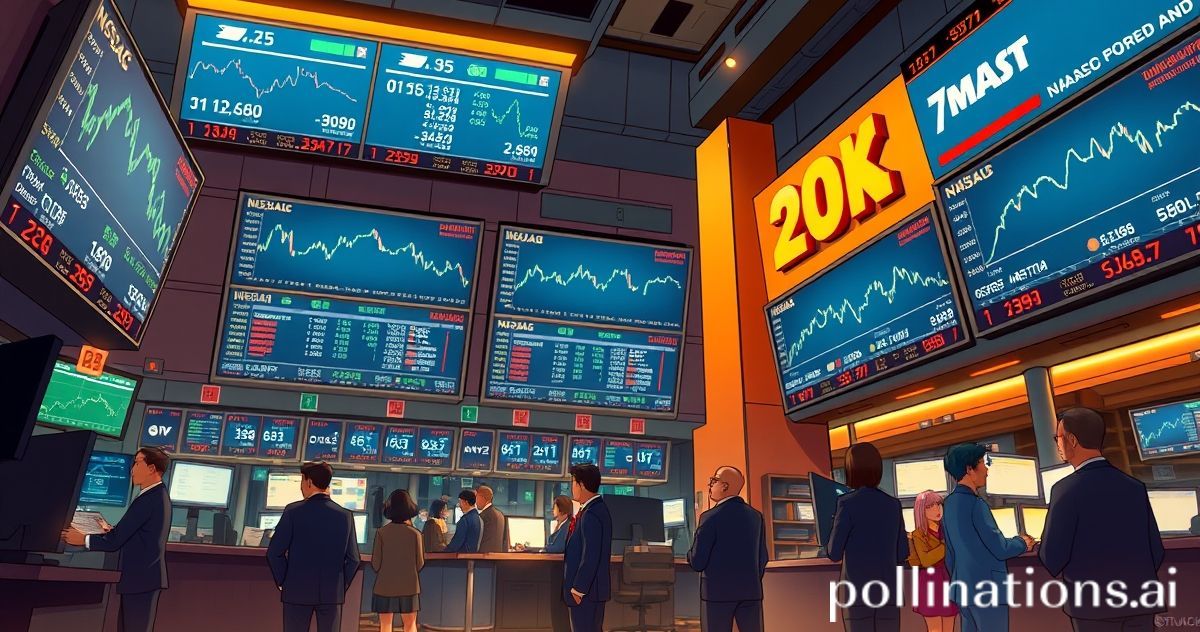
The NASDAQ Composite Index closed mixed on July 10th amid ongoing uncertainty surrounding President Trump's tariff policies, with investors maintaining a cautious stance as market volatility continues to reflect policy-driven concerns.
Trump Tariff Policy Creates Market Turbulence
President Donald Trump's announcement of imposing tariffs of up to 40% on 14 countries, including Japan and South Korea, has created significant volatility in U.S. equity markets. Technology stocks listed on NASDAQ are particularly vulnerable to these trade policy changes, given their global supply chain dependencies and export exposure.
Citigroup strategists led by Chris Montagu warned that NASDAQ positioning has become excessively extended, increasing the risk of profit-taking activities. This warning comes at a time when valuation concerns for the tech-heavy index are already mounting.
Mutual Tariff Extension Provides Limited Relief
The Trump administration's decision to extend the mutual tariff deadline to August 1st has provided some market relief. Expectations for renewed U.S.-Canada trade negotiations have offered limited support to equity markets, though uncertainty remains elevated.
According to KB Financial's market analysis, the administration's strategy of pressuring major trading partners ahead of the mutual tariff deadline expiration is sending mixed signals to financial markets.
Technology Stocks Face Correction Pressure
NASDAQ's core technology constituents are experiencing significant pressure as AI-driven stocks that reached record highs are now entering a potential correction phase. Legendary short-seller Jim Chanos has warned that the AI ecosystem may be approaching a adjustment period.
The sustainability of the dramatic rise in AI-related stocks, particularly companies like NVIDIA, is being questioned by market analysts who point to elevated valuation metrics across the technology sector.
Interest Rate Environment and Dollar Weakness
The 10-year U.S. Treasury yield's decline to 4.23% has provided some support for technology stocks, which are typically sensitive to interest rate changes. The Dollar Index's fall to 96.77 represents a sixth consecutive month of weakness, marking the longest monthly decline since 2017.
This dollar weakness, combined with expectations of Federal Reserve monetary policy easing, could benefit export-oriented technology companies in the medium term.
Individual Stock Movements
Several NASDAQ-listed companies have announced strategic shifts affecting market sentiment. Recent corporate restructuring activities at companies like CommScope Holdings and McDonald's operational changes are drawing investor attention.
Innovation investments, such as John Deere's expansion into agricultural remote imaging solutions, represent the type of technological advancement that could drive long-term growth for NASDAQ constituents.
Market Outlook and Investment Strategy
Market experts characterize the current NASDAQ environment as a confluence of short-term adjustment pressures and long-term growth potential. The final determination of Trump's tariff policies and the Federal Reserve's monetary policy direction will be crucial variables determining NASDAQ's future trajectory.
Bank of America Securities notes that while long-term trend followers expanded their NASDAQ investments in the first half of 2025, position adjustments may now be necessary given current market conditions.
Global Market Interconnectedness
NASDAQ's volatility is creating ripple effects across global technology markets. Asian tech markets, including South Korea's KOSDAQ, are closely monitoring NASDAQ movements for directional cues.
The inclusion of South Korea and Japan in Trump's tariff target list has heightened concerns about the impact on these countries' technology companies and their U.S. export capabilities.
Investment Considerations
The current NASDAQ environment reflects a market seeking equilibrium between short-term policy risks and long-term technological innovation drivers. Investors are responding sensitively to policy changes while carefully monitoring fundamental shifts in technology companies' business models.
The index's positioning between tariff policy uncertainty and technology innovation potential requires investors to balance risk management with recognition of structural growth trends in the digital economy.
As markets navigate this complex environment, the NASDAQ's performance will likely remain closely tied to both geopolitical developments and the underlying strength of technology sector fundamentals.
Original Korean article: https://trendy.storydot.kr/economy/nasdaq-mixed-close-trump-tariff-uncertainty-july2025


0 Comments